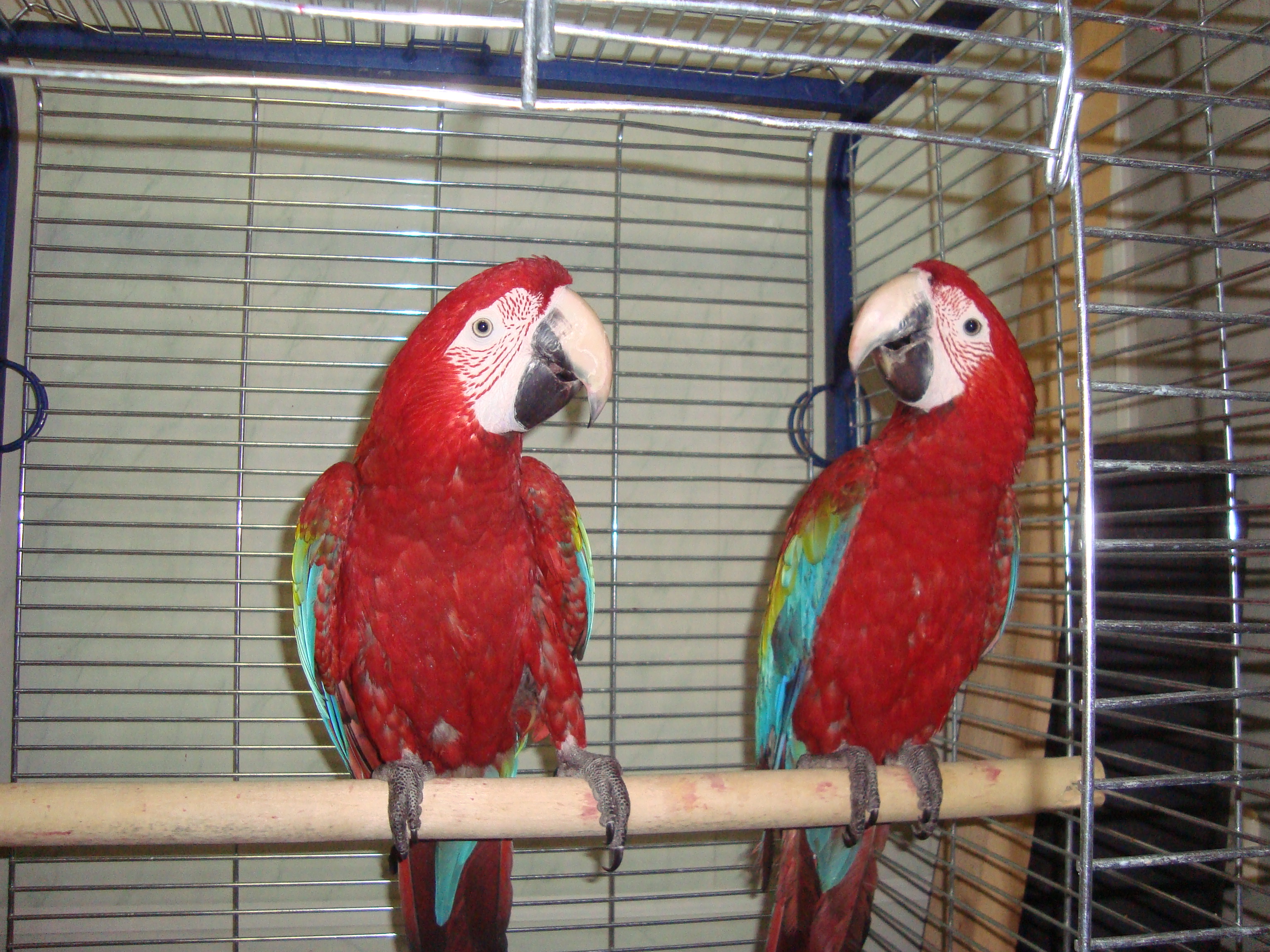
Red-and-green macaw, or Green-winged macaw(Ara chloroptera)
Phylum —chordata
Class — aves
Order — psittaciformes
Family — psittacidae
Genus – ara
Appearance
The Green-winged macaw can be readily distinguished from the Scarlet macaw. While the breast of both birds are bright red, the upper-wing covert feathers of the Green-winged macaw is mostly green but can occasionally sport a few yellow feathers above the band of green (as opposed to mostly yellow, or a strong mix of yellow and green in the Scarlet macaw). In addition, the Green-winged macaw has characteristic red lines around the eyes formed by rows of tiny feathers on the otherwise bare white skin patch; this is one of the biggest differences from a Scarlet macaw to the casual viewer. Iridescent teal feathers are surrounded by red on the tail. If seen together, the Green-winged macaw is clearly larger than the Scarlet macaw as well.
The Red-and-green macaw attains a total body length of 90 to 95 cm (35 to 37 in) in adults. A weight range of between 1,050 and 1,708 g (2.315 and 3.765 lb) has been reported.
Habitat
The natural habitat of this bird is tropical rainforest, lowlands and foothills. They are mainly found in interior regions, rarely occurring in coastal areas. The area of their distribution is partly Central and South America, stretching from eastern Panama to Colombia, Venezuela, the Guianas, across western part of South America from eastern Ecuador and eastern Peru to northern and eastern Bolivia; then throughout eastern South America, including Parana and Mato Grosso in Brazil, reaching Paraguay and Formosa in northern Argentina.
Behavior
They are social birds, living in pairs as well as gathering into family groups or small flocks, consisting of 6-12 individuals. In feeding trees and at clay licks, however, these birds can occasionally be seen in even larger flocks, mixing with other macaws and making a lot of noise, each bird demonstrating its full vocal range. Green-winged macaws are diurnal, spending most of the time under the dense cover of rainforest, where they find shelter as well as socialize and feed. They also spend a lot of time, playing and cleaning each other's plumage, removing lice and ticks from the feathers. If you see 3 or 4 macaws together, it will probably be a pair and their young. These birds are extremely shy, rarely seen in the foliage. Feeling danger, the bird immediately flies off, emitting loud screeches.
Diet
Green-winged macaws are herbivores (granivores and frugivores).Their diet mainly consists of seeds, fruits, nuts and wide variety of green plants. In addition, they consume clay and bark of trees.
Reproduction
These birds have monogamous mating system. They mate once in a lifetime, remaining and travelling together even out of the breeding season. They breed in December, nesting high in tree hollows. Usually, 2-3 eggs are laid and incubated for 28 days. The female is on the nest while the male provides her with food, regurgitating it from his throat pouch. By the end of incubation period, the eggs begin hatching with intervals of 1-5 days. The parents feed the chicks by means of regurgitation, provided that the firstling is always fed prior to others. During the first 3-4 months of their lives, the hatchlings stay in the nest, where the parents feed and care for them, until the young leave the nest to find mates. Sexual maturity is reached at about 2-3 years old.
In captivity
If properly fed and cared for, a Green-winged macaw is reported to have a life span of more than 70 years.
The cage must be all-metal, welded, with thick bars. It is better to put padlocks on the door: they quickly adapt to open other locks.
The keeping is not very complicated. They eat sunflower seeds, hazelnuts and walnuts. Wheat, corn and some seeds must be sprouted. They eat vegetables, fruits and berries well. It is necessary to give fresh branches of fruit trees as often as possible, both small and quite thick – up to 7 cm in diameter, the bark of which contains minerals and vitamins necessary for birds.
Care consists of keeping the enclosure clean. Water needs to be changed daily. These birds, like all large parrots, have a highly developed food conservatism, but despite their preferences, it is necessary to diversify their diet as much as possible.
 Russian
Russian
 English
English























